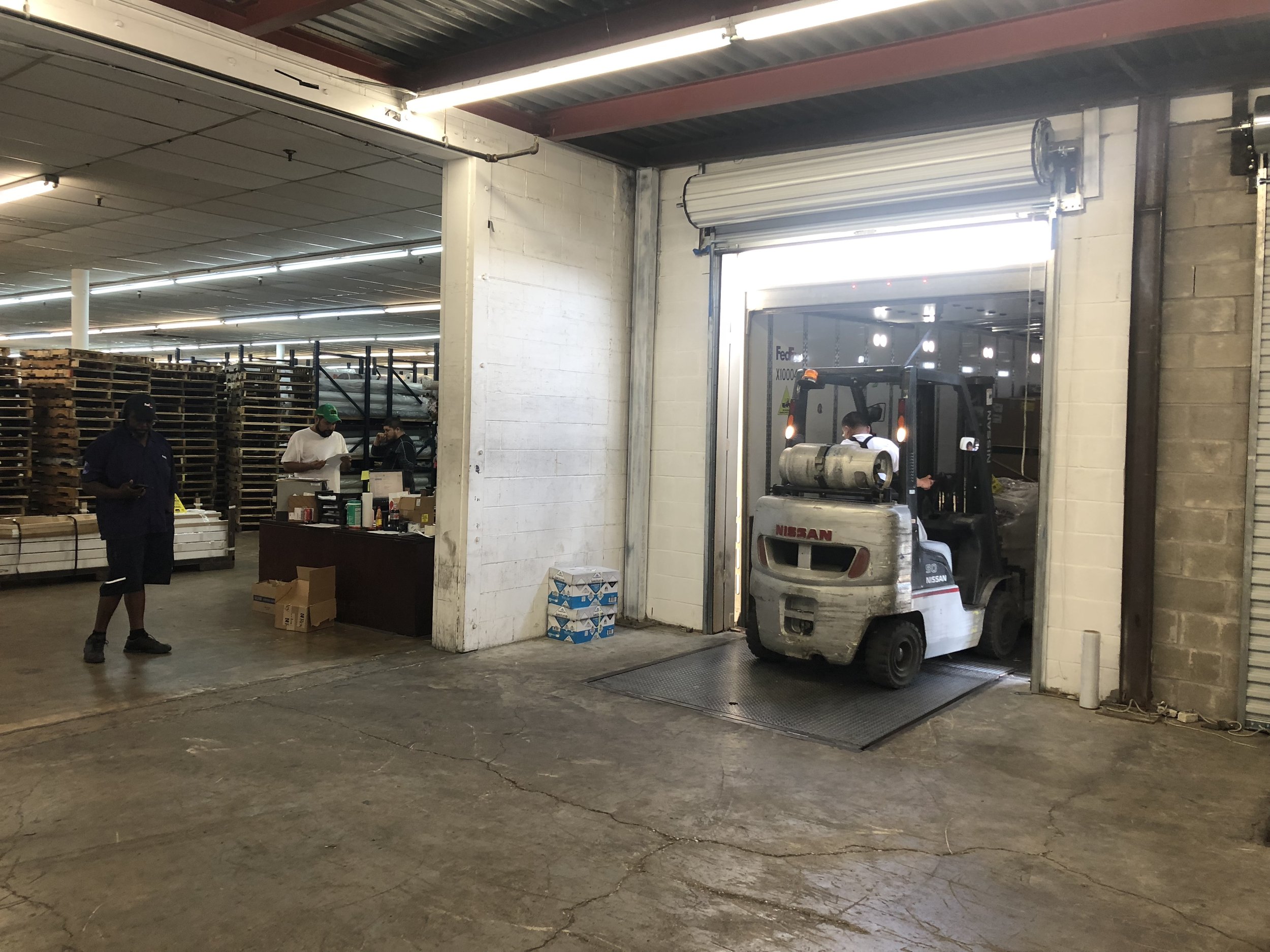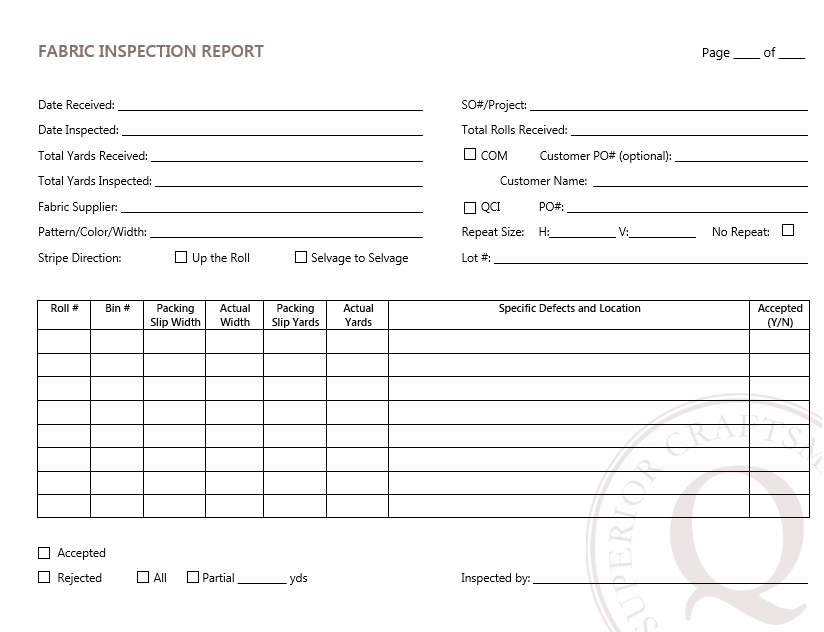What Happens With Your COM Fabric?
We spoke at length about what the differences are between items we purchase and Customer Owned Materials (COM) in our post titled, “COM vs. Manufacturer's Material”. COM is usually fabric purchased by a hotel, purchasing group or designer and sent directly to the manufacturer to be used in the production of specified treatments. We definitely recommend reading up on the differences before your next project. That being said, we’ve written this post to discuss what happens if you have chosen to purchase your own fabric and send it to Quiltcraft.
Keep in mind that these are Quiltcraft’s specific standards of Inbound Quality Control or Fabric Inspection. We are not speaking of other manufacturers standards although it is likely that their process will follow a similar pattern, at least.
The Process
When your fabric arrives at Quiltcraft it lands at the receiving dock (see picture above). Our receiving manager and staff receive all items and match them to their corresponding jobs within 24 hours. Once fabric is received it is inspected visually and measured in multiple steps. Based upon the below criteria, we will determine how much of the actual fabric will be inspected yard by yard.
Shipments of 1-200 yards are inspected at 100%
Shipments of 201-400 yards are inspected at 50% of their total yardage
Shipments over 400 yards are inspected at 10% of their total yardage
Each roll of fabric to be inspected is checked visually for width consistency, color variations and other defects such as tears and fabric pulls. Assuming it's coated the fabric is also then inspected on a ‘backlit’ machine for pinholes. Each and every defect of any kind is marked with a small piece of colored tape along the edge of the roll.
Once this inspection process has been completed, all of the defects are counted and the shipment is graded based upon this criteria…
At less than 50 yards: if it is in more than one piece and/or it has more than 3 flaws, it will fail.
At 50-100 yards: if it is in more than 2 pieces and/or it has more than 5 flaws, it will fail.
At more than 100 yards: if it has more than 1 flaw per 10 yards, it will fail.
Further, all shipments will fail inspection if they have color and width variations and/or are less than 99% or greater than 110% of requested yardage.
It should be noted that pattern repeat and color matching (if samples have not been submitted) are NOT inspected.
If It Failed Inspection
In the event that a shipment fails to pass inspection, a report is sent from the receiving department to the project manager who will get in contact with you, the customer. The inspection report will include a detailed summary of why the inspection has failed and if that reason merits pictures (the nature of the defects have to do with color, tears and pulls), they will be included. At that point, it will be in the hands of the customer and the vendor to directly resolve the issue, whether that be to have the fabric replaced or to use it as is.
This is the form that the 'Inspection Report' is filed on. If a fabric fails inspection you will be sent a copy of this form along with pictures of the said defects.
If It Passed Inspection
In the event that the shipment passes inspection it is tagged with a unique sales order identification number in our internal tracking system and the rolls are taken to a specific holding bin until a later time at which they will be pulled and started on the production process.
The entire Quality Control process takes 4 business days; 24 hours are allowed for the product to be reviewed at the receiving dock and imputed into the internal system, at that point 72 hours are allowed for all product to be inspected and assigned a location.
Download our simple Quality Control Communication Card below and please get in contact with us if you have any further questions.
This is an example of the tagging system we use for all COM fabrics. The unique number is tied directly to a jobs unique Sales Order number for internal tracking.
This is an example of the massive fabric bins where all COM & QC fabric is stored until it is time for production.
We hope this was helpful. Don’t hesitate to ask us if you have any questions!
Check Out Related Resources














